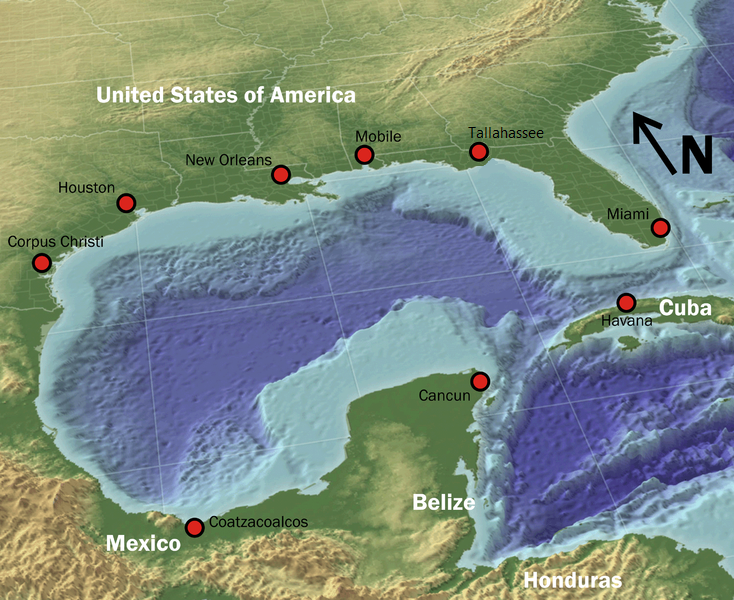
Posted on 04/16/2012 7:11:14 AM PDT by Red Badger
NASA is clearly looking far into the future for a way to handle both human waste and a need for fuel on either long space flights or when attempting to colonize another planet. To that end, they’ve assigned life support engineer Jonathan Trent the task of coming up with a way to use algae to solve both problems at once. His solution is to use plastic bags floating in seawater as small bioreactors, containing wastewater, sunlight and carbon dioxide to grow algae that can be used as a means to create biofuel.
The whole thing is called Offshore Membrane Enclosures for Growing Algae or more concisely, OMEGA, and will be demonstrated to reporters at one of San Francisco’s public utilities water pollution control plants tomorrow and is the culmination of $10 million worth of research.
The idea is more practical than revolutionary says Trent, who has spoken to reporters already about the project. The idea was to figure out a way to create an algae farm that could be placed close to a waste treatment facility, without taking up a bunch of land. That’s when he came up with idea of using plastic bags floating in the ocean. Conventional systems use large pools of water set up on dry land. In the test facility, each bag is four meters long and has been seeded with wastewater and carbon dioxide. Sunlight makes its way through the clear plastic as the bags float on seawater, which not only serves as a place for the bags to reside, but also help keep the algae cool, which must be done mechanically in other facilities. The algae eat the wastewater and grow until the bag is filled, at which point it is removed to be used for making biofuel.
Reports thus far show that algae farms set up in this manner would be capable of producing over two and a half million gallons of fuel annually in an area just under two square miles.
Trent says with a real farm, the carbon dioxide come could from nearby power plants, helping to reduce the carbon footprint of the whole process. Not helping, on the other hand, is that the whole scheme is based on petroleum based plastic bags, which in addition to their inherent carbon footprint would also have to be disposed of once a year as they degrade in saltwater. Trent suggests that California farmer’s could use them as field cover instead of the large tarps they currently use. He also says that if one or more of the bags should break, like say in a storm, there is no worry as the algae would die in the seawater and the wastewater released would be the same as wastewater facilities such as those in San Francisco already pump into the bay.
At this point it seems clear that a new type of plastic will need to be developed for the project to become viable, especially if it is to be ported to space exploration applications at some point; perhaps one made from biodegradable material so that it could be grown along the way, and then could be used as fertilizer afterwards.
More information: Offshore Membrane Enclosures for Growing Algae (OMEGA) project: http://www.nasa.go … A/index.html
Trying to get on the good side of the administration?
How does this apply to outer space, exactly?
A bio-fuel company in Washington closed because there was no market for it. Some gov’t cars had been using it but there wasn’t enough sales to keep it going. Plus the cost was around $7.50 a gallon.

Google “abiotic oil.”
There’s enough evidence now that I’m extremely skeptical about oil NOT being a renewal resource.
Navy Takes Biofuels Campaign Into Uncharted Waters
Since 2006, the Defense Logistics Agency has procured more than 36 million gallons of ethanol-and-petroleum blends for the military. The Navy in September ordered an additional 150,000 gallons of algae-based fuel from San Francisco company Solazyme. The new agreement is seven times the size of the initial 20,000-gallon contract awarded last year. The Navy is paying big bucks for these fuels.
The service consumes an average of 1.2 billion gallons of petroleum each year at a cost of $3 billion — about $2.50 per gallon. The service paid Solazyme $8.5 million to provide just 20,000 gallons of algae-based fuel — $425 per gallon. At that rate, it would cost the Navy some $142.8 billion for the 8 million barrels of biofuel needed to meet its 2020 goal.
Camelina-based fuel is a bit cheaper but still more expensive than petroleum. In September 2009 the DLA’s defense energy support center paid Montana’s Sustainable Oils $2.7 million for 40,000 gallons of camelina-based fuel. That comes to about $67.50 per gallon.
I know it’s more expensive for now. I’m not suggesting selling it. Although it could be sold at a loss, to offset costs. :)
Just developing it.
Surely NASA is aware of the Second Law of Thermodynamics. Wait....I'll take that back. I guess that if your mission is Muslim Outreach and the Global Warming Religion, minor details such as the Laws of Physics aren't critical.Algae don't simply convert carbon dioxide into fuel. They USE THE SUN'S ENERGY to make the conversion. The energy has to come from somewhere. Someone needs to tell these dudes that there ain't no sunlight in a space ship.
I’m familiar with the concept. As far as I know, we don’t know the rate the earth develops the oil, assuming it does.
Even if it did, does it develop it at a rate that is faster then we use it, or are we eventually going to face a time of ration, because we have temporarily run out and have to wait for the earth to do its job?
Problems 1 and 2 are solved by the plastic bag, and since this uses waste and/or sea water, 3 is covered as well. I think his general idea has merit. Algae has its own natural sea-worthy bag it lives in. We could tweak algae cell DNA to grow to monster size, say 3 inch diameter balls, inject their food and CO2 inside and let them sun bathe in free open ocean "farm fields" until harvest.
Perhaps. But in the meantime, we need to be aggressively using our own resources to produce energy so that we can use the profits to INVENT these things. Giving the money to hostile countries so that they can destroy our way of life is hardly the right approach. (And I'm including US government taxes in the definition of hostile countries.)
Ping.
Ping.
Yes, and all of the people of the world would comfortably fit into a building 2 miles by 2 miles by 2 miles. (Providing you didn't need any infrastructure to access them)
You not only need to get the S#!t into the bags, you have to get the algae out. Then you need to replace the bags, fix the failures, and remove the failures. You need a WHOLE lot more than bag space to do this.

When the algae puzzle is solved, and it will be, all fossil fuels still in the ground become practically worthless overnight. We should be pumping all our valuable fossil fuel out of the ground now like it is going out of style, because it is. The idea of saving it for the future is foolish. Now it has extreme value, in the future its value drops to the point it isn't worth extracting.
“two and a half million gallons of fuel annually in an area just under two square miles”
Transportation fuel use is about 6 billion barrels per year or about 240 billion gallons per year. Check my math but that means about 10 thousands square miles of sewage filled plastic bags floating along our coasts.
Some people don’t want to see a windmill or drilling station on the horizon how are they going to sell this?
Make that 20,000 sqaure miles
Well, it won’t block the view..........

Disclaimer: Opinions posted on Free Republic are those of the individual posters and do not necessarily represent the opinion of Free Republic or its management. All materials posted herein are protected by copyright law and the exemption for fair use of copyrighted works.